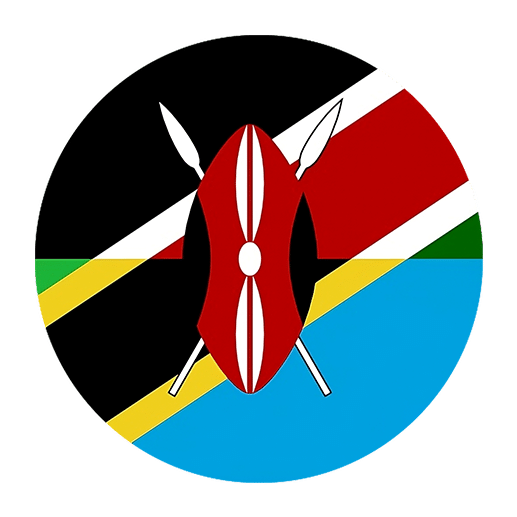Swahili, a beautiful and melodious language spoken by millions in East Africa, is not only rich in culture but also in musical heritage. One delightful way to introduce children to Swahili is through songs and nursery rhymes. These musical pieces are simple, repetitive, and captivating, making them an effective tool for language learning. In this article, we will explore how Swahili songs and nursery rhymes can benefit children and highlight some popular examples to get you started.
The Benefits of Learning Through Songs and Nursery Rhymes
Songs and nursery rhymes play a significant role in language acquisition, especially for young learners. Here are some of the key benefits:
1. Enhancing Vocabulary and Pronunciation
Songs and nursery rhymes are packed with repetitive phrases and simple vocabulary. This repetition helps children remember words and phrases more easily. Additionally, the rhythmic and melodic nature of songs aids in pronunciation, allowing children to mimic the sounds and intonation of native speakers.
2. Cultural Exposure
Learning songs and nursery rhymes in Swahili exposes children to the culture and traditions of the regions where the language is spoken. This cultural connection can foster a deeper appreciation and understanding of the language.
3. Improving Memory and Cognitive Skills
The repetitive and rhythmic patterns in songs and nursery rhymes can significantly enhance memory and cognitive skills. As children sing along, they are also developing their listening skills, which are essential for language learning.
4. Making Learning Fun
Children are naturally drawn to music and rhythm. Incorporating songs and nursery rhymes into language learning makes the process enjoyable and engaging. When children have fun, they are more likely to stay motivated and retain what they learn.
Popular Swahili Songs and Nursery Rhymes
To help you get started, here are some well-loved Swahili songs and nursery rhymes. These selections are not only entertaining but also excellent resources for learning Swahili.
1. Jambo Bwana
“Jambo Bwana” is a popular Swahili song that is often taught to beginners. Its catchy tune and simple lyrics make it a favorite among children and adults alike. The song is a welcoming greeting, and its repetitive structure helps learners pick up key phrases quickly.
Lyrics:
Jambo, jambo bwana
Habari gani?
Mzuri sana
Wageni, mwakaribishwa
Kenya yetu, hakuna matata
Meaning:
Hello, hello sir
How are you?
Very fine
Guests, you are welcome
Our Kenya, no worries
2. Twinkle, Twinkle Little Star (Nyota Nyota)
The beloved nursery rhyme “Twinkle, Twinkle Little Star” has a Swahili version called “Nyota Nyota.” This familiar tune makes it easier for children to learn and remember the Swahili words.
Lyrics:
Nyota, nyota, angani
Unang’aa, kama mimi
Jinsi gani, niungae
Kama wewe, nyota nyeupe
Meaning:
Star, star, in the sky
You shine, like me
How can I shine
Like you, white star
3. Mdundo wa Simba (The Lion’s Beat)
“Mdundo wa Simba” is a playful song about a lion’s beat. It is an excellent way to introduce children to animal names and sounds in Swahili. The song’s rhythm and repetition make it enjoyable and easy to learn.
Lyrics:
Mdundo wa simba, ndiyo huu
Mdundo wa simba, ndiyo huu
Simba ananguruma, grrr grrr grrr
Simba ananguruma, grrr grrr grrr
Meaning:
The lion’s beat, this is it
The lion’s beat, this is it
The lion roars, grrr grrr grrr
The lion roars, grrr grrr grrr
4. Watoto Wetu (Our Children)
“Watoto Wetu” is a song that celebrates children and their importance in our lives. It is a heartfelt and simple song that resonates with both children and adults.
Lyrics:
Watoto wetu, ni wa thamani
Tunawapenda, kwa moyo wa dhati
Ni furaha yetu, ni tumaini
Watoto wetu, ni wa thamani
Meaning:
Our children, are precious
We love them, with sincere hearts
They are our joy, they are our hope
Our children, are precious
5. Panda Panda (Climb, Climb)
“Panda Panda” is a fun and energetic song that encourages children to climb and explore. It is perfect for getting kids moving and engaged in the learning process.
Lyrics:
Panda panda, panda mti
Fika juu, ona mbali
Panda panda, panda mti
Fika juu, ona mbali
Meaning:
Climb climb, climb the tree
Reach the top, see far
Climb climb, climb the tree
Reach the top, see far
How to Use Swahili Songs and Nursery Rhymes in Language Learning
Incorporating Swahili songs and nursery rhymes into language learning can be highly effective. Here are some tips on how to make the most of these musical resources:
1. Sing Along
Encourage children to sing along with the songs. The act of singing helps with memorization and pronunciation. Play the songs regularly and join in the singing to create a fun and interactive learning environment.
2. Use Visual Aids
Visual aids such as flashcards, pictures, and videos can enhance the learning experience. Show images related to the lyrics to help children understand the meaning of the words and phrases.
3. Create Actions
Incorporate simple actions and gestures that go along with the lyrics. For example, pretend to climb when singing “Panda Panda” or roar like a lion during “Mdundo wa Simba.” This physical activity helps reinforce the vocabulary and makes learning more engaging.
4. Repeat and Review
Repetition is key to language learning. Play the songs regularly and review the lyrics and meanings with the children. Over time, they will become more familiar with the words and phrases.
5. Encourage Creativity
Encourage children to come up with their own songs or rhymes in Swahili. This creative exercise allows them to practice using the language in new and imaginative ways.
Additional Resources for Learning Swahili Through Songs
To further enhance your Swahili language learning journey, here are some additional resources:
1. Online Platforms
Websites such as YouTube have a plethora of Swahili children’s songs and nursery rhymes. Channels dedicated to language learning often have playlists specifically for kids.
2. Language Learning Apps
There are several language learning apps that include songs and rhymes as part of their curriculum. Apps like Duolingo, Gus on the Go, and Drops offer interactive and engaging ways to learn Swahili.
3. Books and CDs
Look for children’s books and CDs that feature Swahili songs and nursery rhymes. These resources often come with illustrations and translations, making them excellent tools for learning.
4. Cultural Events and Classes
Participate in cultural events or language classes that focus on Swahili. Many community centers and cultural organizations offer programs for children that include music and songs.
Conclusion
Swahili songs and nursery rhymes are a delightful and effective way to introduce children to the language. The rhythmic and melodic nature of songs makes them an excellent tool for learning vocabulary, pronunciation, and cultural nuances. By incorporating these musical pieces into language learning, you can create a fun, engaging, and enriching experience for young learners. So, grab a musical instrument, gather the children, and let the beautiful sounds of Swahili fill your home or classroom. Happy singing and learning!

